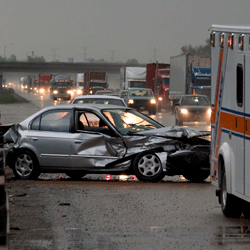 A new study published this week examined data taken from a survey of close to 150,000 drivers across 19 states and in the District of Columbia. It found that over 4% of drivers had admitted to falling asleep at the wheel in the past 30 days.
A new study published this week examined data taken from a survey of close to 150,000 drivers across 19 states and in the District of Columbia. It found that over 4% of drivers had admitted to falling asleep at the wheel in the past 30 days.
Men were more apt to report falling asleep driving than were women. Younger drivers were also more apt to report falling asleep than their older counterparts. Prevalence of drivers driving drowsy was the highest in Texas with 6.1%, while it was the lowest at 2.5% in Oregon.
Statistics were cited from the National Highway Traffic Administration showing that nearly 25% of all motor vehicle accidents that result in death involved a driver who was drowsy. Nearly 2% of all accidents that did not result in death also were caused by drowsy drivers. Earlier research, noted authors of the study, showed that accidents caused by drowsy driving are more likely to have injuries and possibly cause death, than crashes involving non-drowsy drivers.
The safest thing to do if a driver starts to feel drowsy or tired while behind the wheel is to find a safe place off the road to get rest. Increasing the volume of the radio, opening the vehicle’s windows or increasing the air conditioning in the vehicle are not ways that effectively work to stay awake.
